Navy Blue and Gold

Brief Synopsis
Cast & Crew
Sam Wood
Robert Young
James Stewart
Florence Rice
Billie Burke
Lionel Barrymore
Film Details
Technical Specs

Synopsis
Young Richard Gates, Jr., the scion of a wealthy family, is ecstatic when he receives a telegram admitting him to the Naval Academy at Annapolis. So are Southern Institute football star Roger Ash and ordinary seaman "Truck" Cross. After induction, the three boys select each other for roommates and get along very well, even though Ash doesn't take to the discipline at the Academy and is very conceited about his prowess on the football field. The good-hearted Dick becomes their mascot and makes the plebe football team despite his size. Retired coach Captain "Skinny" Dawes takes an interest in the boys, especially Truck, who reminds him of someone on his 1909 squad. Truck is as enthusiastic about the Navy as Dick is about football and Roger is about using the Academy to advance himself. One Sunday, while walking alone, Dick is tricked into making an infraction of etiquette against Harnett, an upper classman, and when he returns home, Roger and Truck discover that he has been severely paddled. Though hazing is a dismissal offense, Roger takes matters into his own hands and challenges Harnett to a boxing match, then bests him and wins the respect of his schoolmates. At Christmas, Dick invites Truck and Roger to his home for the holidays and the boys are touched by the kindness and generosity of the family. Both Truck and Roger are attracted to Patricia, Dick's sister, but though Roger is more aggressive in his pursuit, Pat prefers the more bashful Truck. At a Spring dance, Pat and Truck become close, but Roger still tries to pursue her. The next year, all three make the varsity football team and become successful, although Ash's superior attitude bothers coach Tommy Milton, who accuses him of being a slacker and egotist. After his talk with the coach, Roger gets drunk and goes A.W.O.L. Dick and Truck find him in a bar and take him out, but run into the coach. They are saved from expulsion when Skinny happens by and says that he had asked the boys out to dine and they had simply forgotten to get permission. One day, in class, when they hear a story about a drunken officer who shirked his duty and was stricken from the ranks of the navy, Truck jumps up and calls the story a lie and relates the real story about the man, who was not drunk, but ill when his ship went aground due to the incompetence of the navigator. Rather than blame the navigator, who had died, the man refused to defend himself at a court martial, but continues to instill a love of the Navy in his son, Truck. Because Truck did not use his full name, John Cross Carter, when enrolling, he faces dismissal, although Dick's father tries to help him in Washington, accompanied by Truck's father. Pat tells Truck how much she cares for him, as Roger overhears and realizes how fond he is of Truck and the Navy. While Roger prays aloud for Truck in front of Tecumsa, a statue at the school, Skinny listens in and resolves to help. On the day of the Army-Navy game, Dick and Roger leave while Truck stays in his room and a hospitalized Skinny listens to the game on the radio. Though Truck is dismissed by the court, he is given clemency and is told that his father has been completely exonerated. Now able to go to the game, Truck joins the team and Navy wins. When the football team gathers to strike a bell in the traditional ceremony of victory against army, Roger surrenders his place to the now recuperated Skinny.

Director

Sam Wood
Cast

Robert Young
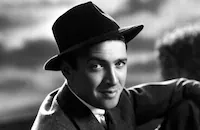
James Stewart
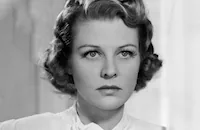
Florence Rice

Billie Burke
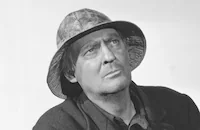
Lionel Barrymore
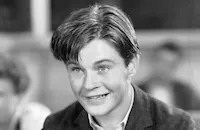
Tom Brown
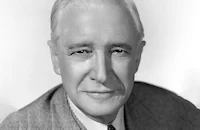
Samuel S. Hinds

Paul Kelly
Barnett Parker

Frank Albertson

Minor Watson
Robert Middlemass

Phillip Terry
Charles Waldron
Pat Flaherty

Stanley Morner
Matt Mchugh
Ted Pearson

Don Barry
Roger Converse

Donald Douglas
Robert Hoover
Walter Soderling
Julie Bescos
Joseph Tozer
Lowden Adams
Commander Delaney
Dick Winslow
Louis Durst

Wilfred Lucas
Barbara Bedford
Jack Pennick
Paul Barrett
Will Morgan
Eddie Hart
Henry Taylor
Buddy Williams
Tom Hanlon
John Hiestand
Crew
Tom Andre
George Bruce
Cedric Gibbons
Harvey Haislip Commander, U.s.n. Retired
John Hoffman
Urie Mccleary
John Seitz
Douglas Shearer
Walter Strohm
Dolly Tree
Edward Ward
Edwin B. Willis
Sam Wood
Sam Zimbalist

Film Details
Technical Specs

Articles
Navy Blue And Gold - Navy Blue and Gold
The rousing climax of the film - an away game at West Point where the Navy-Army rivalry is intense - occurs as Cross awaits news of his dismissal from the Navy for lying about his true identity and Captain Dawes lies sick in the hospital, his very health apparently hinging on a Navy football win.
Navy Blue and Gold had several secrets to its success, offering audiences a celebration of three American institutions: football, Annapolis and the engaging James Stewart. Much of the critical praise for the film was heaped on Stewart's shoulders, who offered a thoroughly convincing performance as an earnest, go-Navy plebe who overcomes tremendous odds in his desire to honor the Academy and his father. The New York Herald Tribune said of Stewart, "If Navy Blue and Gold is not the most beguiling service-college picture yet filmed, it is not Mr. Stewart's fault." The review went on to add, "It is due to his expert rendition of a rather preposterous part that a rather preposterous show becomes generally exciting."
Maybe there were personal reasons for the conviction with which Stewart played a cadet. Though he eventually went to Princeton and graduated with a degree in architecture, James Stewart at one point wanted to attend Annapolis. In real life, Stewart had a long legacy of service, first as an Eagle Scout growing up in his hometown of Indiana, Pennsylvania and then as an Air Force officer during WWII and the first star to enter service, joining up a year before the bombing of Pearl Harbor. He was highly decorated and eventually served in the Air Force Reserve before retiring as a brigadier general, the highest ranking officer in the US military.
Though all three leads were considered a little old to play new cadets (Young was 30, Brown 24 and Stewart 29), the public embraced the film and its patriotic message. The director of Navy Blue and Gold, Sam Wood, undoubtedly played a major role in crafting a wholesome, crowd-pleasing entertainment out of material that might have been hackneyed in another man's hands. Wood had a love of fitness and sports which was often reflected in the other films he helmed such as the story of baseball legend Lou Gehrig in The Pride of the Yankees (1942) and The Stratton Story (1949) starring James Stewart as Chicago White Sox pitcher Monty Stratton, whose career continued despite losing a leg in a hunting accident. Wood's direction of the final Army-Navy game is especially effective, using actual footage of the cadets performing cheers, the Army mule and Navy goat mascots and the jubilation of the cadet-filled stadium.
Director: Sam Wood
Producer: Sam Zimbalist Screenplay: George Bruce based on his novel
Cinematography: John Seitz
Production Design: Cedric Gibbons, Urie McCleary
Music: Edward Ward
Cast: Robert Young (Roger Ash), James Stewart (John "Truck" Cross), Lionel Barrymore (Capt. ÒSkinnyÓ Dawes), Florence Rice (Patricia Gates), Billie Burke (Mrs. Alyce Gates), Tom Brown (Richard Arnold Gates, Jr.), Samuel S. Hinds (Richard A. Gates, Sr.), Paul Kelly (Tommy Milton), Frank Albertson (Weeks).
BW-94m.
by Felicia Feaster

Navy Blue And Gold - Navy Blue and Gold
Quotes
Trivia
Notes
Portions of the picture were filmed at the Naval Academy in Annapolis, MD. The Los Angeles Memorial Coliseum was used as the Southern Institute stadium in the early portion of the film and later as the Naval Academy stadium. According to news items in Hollywood Reporter, at one time George Murphy was to star in this picture, replacing Robert Young.















